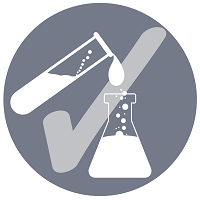Back
Formulation and Delivery – Biomolecular
Session: Symposium: Advances in Engineering Technologies for Drug Substance and Enabling Drug Product (BM)
Understanding Mechanisms When Considering Alternative Surfactants in Biologic Formulation
Tuesday, October 18, 2022
9:00 AM – 9:30 AM ET
Location: 204 AB

Susan Jordan, PhD
Technical Fellow
IFF Pharma Solutions
Wilmington, Delaware
Speaker(s)
A major challenge in the development of biologic therapeutics is the identification and design of a stable formulation. Due to their complex structure, protein-based biologics can undergo many pathways to unfolding and aggregation, leading to loss of activity and immunogenicity. New biologic modalities are expected to have more complex aggregation pathways than conventional molecules. Excipients are used to help maintain biologics in their native conformation, protecting them from the various forces that lead to destabilization. To block or mitigate some destabilization pathways, including those at hydrophobic surface interfaces, surfactants are used. Polysorbates are by far the most common surfactants used in parenteral biologic drug products, having gained widespread acceptance through their decades of use. However, in recent years, many concerns about and limitations of the polysorbates have been identified, leading to formulators searching for alternatives to this technology. (Other submitted programming will specifically address these limitations, including stability and immunogenicity). This presentation summarizes alternatives to polysorbates that are being explored through the industry, highlighting the benefits and drawbacks to each of these technologies. Technologies include repurposing of surfactants used in other industries such as Brij, newly-designed surfactants, synthetic polymers, and cyclodextrins. Mechanisms of behavior will be highlighted for each technology presented, highlighting the importance of understanding aggregation phenomena and pathways for any given API molecule. Adoption considerations such as regulatory status and regulatory requirements will also be discussed. Summary slides will be included to highlight the pros and cons on each technology, both incumbent and novel. Additionally, a summary of the challenges and hurdles to introducing a new technology will be shared.
Learning Objectives:
- Upon completion, participants will be able to describe the different mechanisms that different surfactant alternatives utilize for protein stabilization.
- Upon completion, participants will be able to list this different alternative surfactant technologies being explored across the industry.
- Upon completion, participants will be able to prioritize which proteins in their development pipeline would benefit from alternative surfactants given adoption risks.

